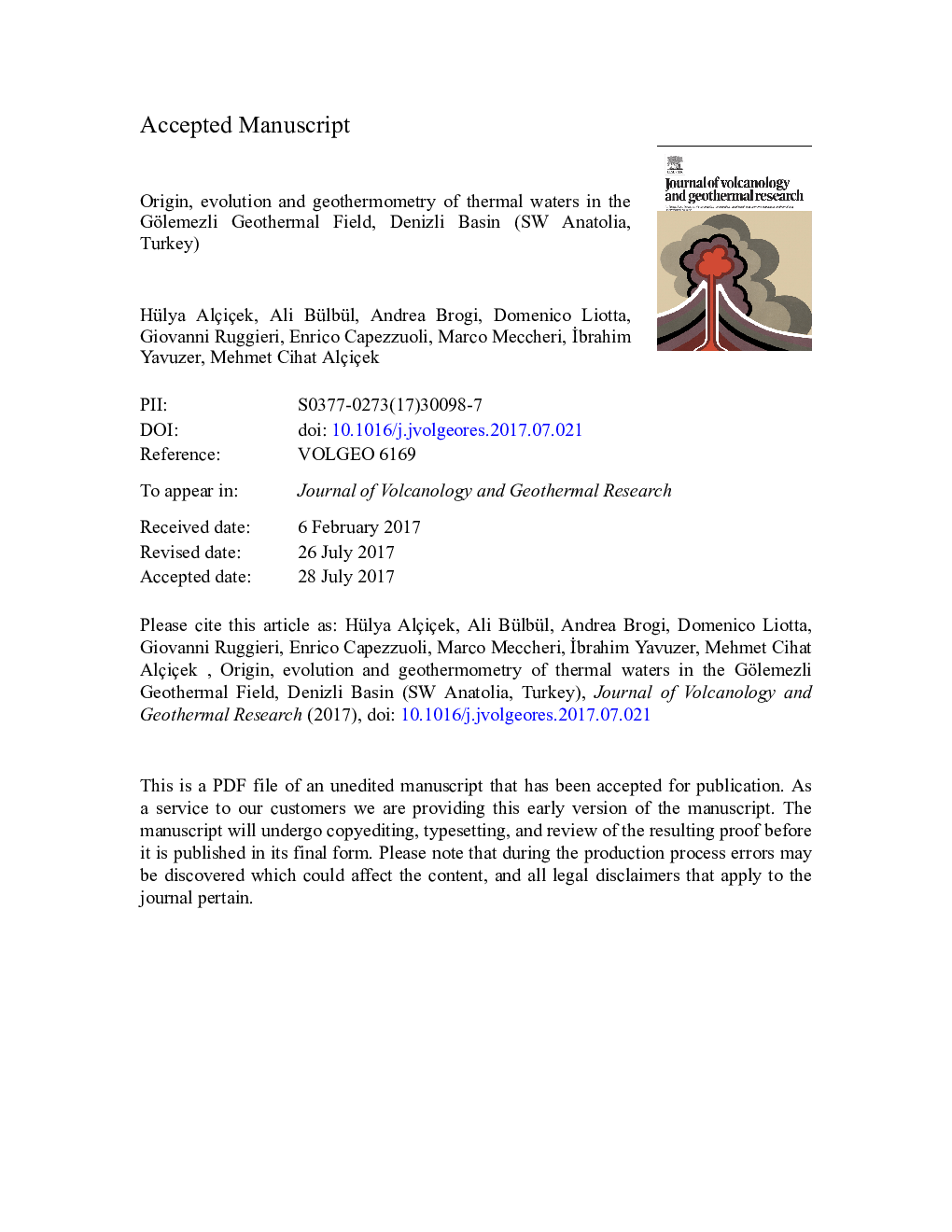| Article ID | Journal | Published Year | Pages | File Type |
|---|---|---|---|---|
| 8911414 | Journal of Volcanology and Geothermal Research | 2018 | 95 Pages |
Abstract
Very negative δ18O and δ2H isotopic ratios are respectively between â8.37 and â8.13â° and â61.09 and â59.34â° for the SO4-rich thermal waters, and ca. â 8.40 and â8.32â° and â 57.80 and â57.41â° for the HCO3-rich thermal waters. Low tritium (< 1 TU) and low oxygen isotope values reflect a deep circuit and fluids of meteoric origin. Positive δ13CDIC ratios (+ 5.11 to + 7.54â°) of all thermal waters imply a contribution of metamorphic origin. Heating is guaranteed by a deep circuit within an overheated continental crust, mainly affected by damaged rock volumes. Volatile ascent from deep magmatic sources through crustal structures can explain the occurrence of mantle volatiles at shallow depth in the Denizli Basin. The NW- and NE-trending fault systems, associated with their related fractures, played as hydraulic conduits underlining the strict link existing between fractures and fluid convection in the extensional settings. In this view, the GGF is a very good example of geothermal field associated to active tectonic setting and magmatism, as it is the case of the other geothermal fields occurring in the Denizli Basin.
Related Topics
Physical Sciences and Engineering
Earth and Planetary Sciences
Geochemistry and Petrology
Authors
Hülya Alçiçek, Ali Bülbül, Andrea Brogi, Domenico Liotta, Giovanni Ruggieri, Enrico Capezzuoli, Marco Meccheri, Ä°brahim Yavuzer, Mehmet Cihat Alçiçek,
